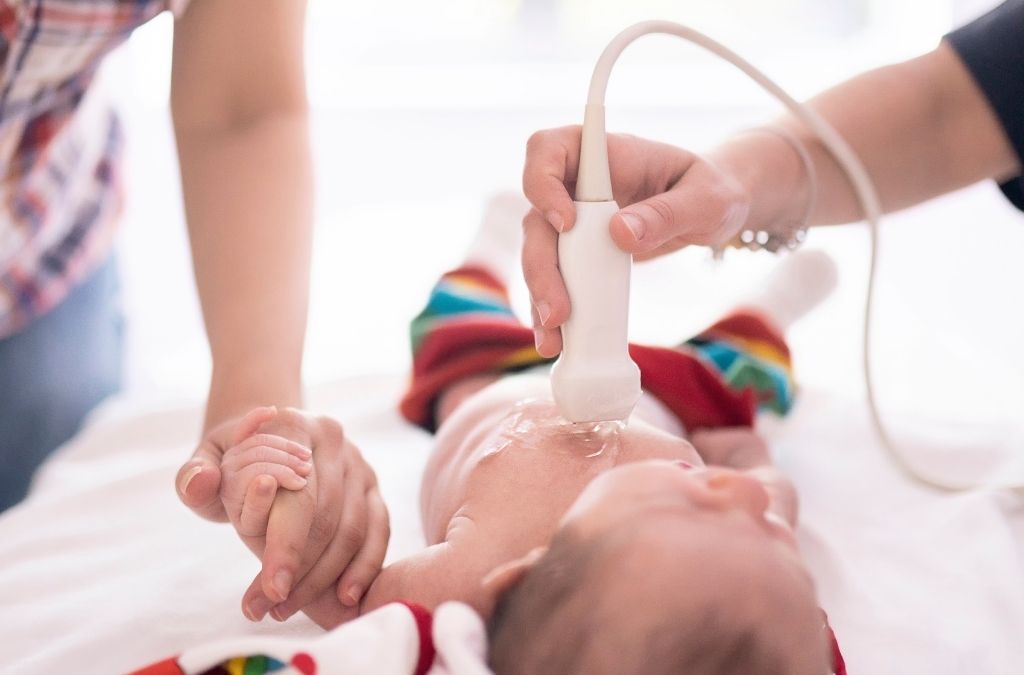For years now, military families have been dealing with the potential effects of PFAS exposure. For those who are not familiar, PFAS is an acronym for per – and poly-fluoroalkyl substances. These are a group of man-made chemicals that have been used in a wide variety of products since the 1940s. While the full impact of these chemicals is still being studied, we do know that they can be harmful to human health. Military families have been particularly hard hit by PFAS exposure due to the many bases that were contaminated with these toxic chemicals.
In this blog post, we will take a closer look at what we know about PFAS exposure and its effects on military families.
Across the country, there are roughly 678 military installations where PFAS, a group of toxic chemicals, are currently lurking. PFAS are also known as “forever chemicals” because once released into the environment, they persist and are very challenging to remove. According to the Pentagon, the source of PFAS on military installations is the use of aqueous film-forming foam – AFFF, for short – by firefighters and trainees to put out jet fuel and petroleum fires. The content of PFAS in AFFF ranges between 50% and a whopping 98%.
Most of these installations are bases where military members and, sometimes, their families are stationed for at least a few months. AFFF has been used since 1966 by the military to extinguish fires, so these military bases have been contaminated for a long time. While approximately 700,000 people live on 100 military bases throughout America, millions have been stationed before. If a woman lived on a military base contaminated with PFAS while pregnant, her child is at significant risk of being born with congenital defects or developing a serious health problem later in life.
Since PFAS are detectable in the umbilical cord and amniotic fluid, multiple toxicological studies found some of these substances teratogenic. This means they can cause birth defects. The most common birth defects of PFAS exposure in utero can lead to cardiac defects; the heart defects PFAS exposure in the womb can cause include:
- aortic valve stenosis: when the heart’s aortic valve narrows and does not open fully, which reduces or obstructs blood flow from the heart into the main artery of the body – the aorta – and to the rest of your body
- coarctation of the aorta: a part of the aorta is narrower than usual, which may cause high blood pressure, muscle weakness, and headaches if not treated
- Ebstein’s anomaly: the tricuspid valve is in the wrong position, and its flaps are malformed, which makes it not work properly so that blood might leak back through the valve
- patent ductus arteriosus: it allows blood rich in oxygen from the aorta to mix with oxygen-poor blood in the pulmonary artery, and, consequently, too much blood flows into the lungs, which strains the heart and raises blood pressure in the pulmonary arteries
- pulmonary valve stenosis: shrinkage of the valve between the lower right chamber of the heart and the lung arteries that causes the valve flaps to become thick or stiff, which hinders blood flow through the valve
- septal defects: they cause a tear in the wall of tissue between the heart’s upper chambers, and if left untreated, the defect can damage the heart and lungs, shortening the person’s life
- hypoplastic left heart syndrome: it obstructs healthy blood flow through the heart, and as the child develops during pregnancy, the left side of the heart does not form correctly
- tricuspid atresia: it causes the valve controlling blood circulation from the right upper chamber of the heart to the right lower chamber of the heart not to form at all
- tetralogy of Fallot: it is caused by a combination of four heart defects, and they result in oxygen-poor blood flowing out of the heart and into the rest of the body
- total or partial anomalous pulmonary venous connection: the veins carrying blood from the lungs do not connect to the left chamber of the heart as they should
- transposition of the great arteries: the two main arteries leaving the heart are reversed, which causes less oxygen-rich blood to reach the body
- truncus arteriosus: the blood vessel coming out of the heart fails to separate during development, leaving a connection between the aorta and pulmonary artery

In addition to heart defects, PFAS exposure in the womb can lead to neural tube defects, which concern the brain, spine, or spinal cord. The two most prevalent neural tube defects are spina bifida and anencephaly. In the former, the fetal spinal column fails to close completely, and there is usually nerve damage causing leg paralysis. Most of the skull and brain do not develop in the latter, and unfortunately, newborns with anencephaly are typically either stillborn or die shortly after birth.
Other birth defects stemming from in-utero PFAS exposure are oral cleft defects, which refer to cleft lip and cleft palate. While the first occurs when the tissue making up the lip does not join completely before birth, which results in a gap in the upper lip, the second happens if the tissue making up the roof of the mouth fails to join fully during pregnancy. Fortunately, many newborns can benefit from surgery to repair oral cleft defects.
Finally, choanal atresia is another birth defect due to prenatal PFAS exposure on military bases. Because it involves narrowing the back of the nasal cavity, it causes difficulty breathing for the newborn. It is quite rare, occurring in approximately 1 out of 7,000 babies, and occurs more frequently in females than males. However, PFAS exposure in the womb increases the chances of this birth defect.
Low Birth Weight, Another Risk for Babies’ PFAS Exposure in the Womb
According to the World Health Organization, a baby with a low birth weight has 5.5 pounds or less. PFAS exposure is associated with low birth weight. While some children with a low birth weight are healthy, others risk experiencing complications. Having a low weight at birth can bring about low oxygen levels, difficulty staying warm, trouble feeding and gaining weight, recurrent infections, breathing problems, nervous system issues, severe digestive problems, sudden infant death syndrome, cerebral palsy, deafness, blindness, and developmental delay.
A related health problem children exposed to PFAS in utero can face is being too small for their gestational age. Once again, this can result in numerous complications, including low oxygen levels, breathing problems, low blood sugar, difficulty staying warm, having too many red blood cells, and low Apgar scores. Apgar is a test for newborns that checks their heart rate, muscle tone, and other signs to determine whether extra medical care or emergency care is necessary. The good news is that 90% of babies with a small gestational age catch up in growth by 2.
How Does PFAS Exposure Cause Health Problems in Newborns?
About 99% of Americans have PFAS in their blood in a lower or higher concentration. These chemicals are also present in everyday items like fast food containers, nonstick cookware, and cleaning products. In pregnant women who spent time on military bases, whether as military members or spouses of military members, the PFAS concentration will inevitably be greater. They lived extensively in these places, eating tainted food, and breathing air with PFAS-containing dust. While in utero, the babies of military women undergo abnormal growth, which often leads to low birth weight and poses a greater risk of childhood obesity and infections later in life. It is worthy of note that once in the blood, PFAS remains there for a very long time, as the body is unable to eliminate these chemicals.
According to a study from the medical journal Reproductive Toxicology, depending on the specific PFAS, there have been positive results at the highest exposure level for cleft palate and heart abnormalities. Furthermore, the researchers observed a link between maternal prenatal PFOA concentration, one of the most studied chemicals from the PFAS class, and brain defects among live births. Interestingly, some medical studies have also found a connection between PFAS exposure and decreased vaccine response in children and a higher risk of kidney and testicular cancer later in life. Lastly, according to a study from Environmental Health Perspectives, people with a history of PFAS exposure are also at risk for prostate cancer, non-Hodgkin lymphoma, and ovarian cancer.
Final Word
While the Environmental Protection Agency is striving to clean up PFAS from hundreds of military bases at the moment, some of which have been deemed Superfund sites, most of these places are still considerably polluted. So, if you recently spent time on a military base as a pregnant woman, you and your unborn child were most likely prone to PFAS exposure. If you were stationed before the 2000s, when more serious endeavors to remove PFAS from the environment began, you were exposed to even greater concentrations of PFAS.
Nevertheless, you should know if your child was born with a congenital defect, had a low birth weight, or was too small for their gestational age. You can claim V.A. benefits on their behalf. You will have to contact your local V.A. or call 800.698.2411, their main information line, or, better yet, 877.222.8387, their health benefits hotline. Their staff will be able to offer you all the information and details you need on how to apply for V.A. benefits for your child.
Read more health tips, check out our page – 5 Healthy Eating Habits Parents Should Teach Their Kids
We have recently posted an article; Baby Food Heavy Metals: Harmful Effects And How To Avoid, read on.
Jonathan Sharp is Chief Financial Officer at <a href="https://www.elglaw.com/" target="blank">Environmental Litigation Group, P.C. </a> – a law firm in Birmingham, Alabama, whose primary practice area is toxic exposure. The attorneys assist people whose health was affected by exposure to hazardous agents, including PFAS, occupationally or in the military.





